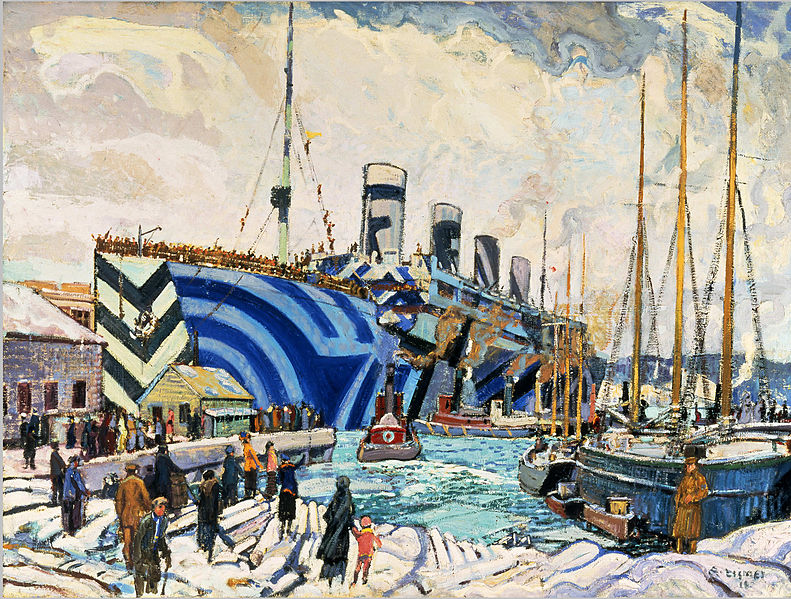Military History Now looks at some of the more eye-catching camouflage schemes of the world wars and suggests that something like it may have a modern application:
… nearly a century after the advent of dazzle, Dr. Nick Scott-Samuel of the University of Bristol believes that similar camouflage patterns painted on the sides of today’s jeeps and armoured cars will make it harder for enemy combatants to get a fix on military vehicles.
“Scott-Samuel, is the first to find evidence that dazzle camouflage can affect perception of speed – but only if the camouflaged object is moving quickly,” says a spokesperson with the British school. “These findings suggest that, while it would probably not have successfully distorted ships’ speeds in the two World Wars, dazzle camouflage could play a role in today’s battlefields where fast-moving army vehicles frequently come under attack from shoulder-launched, rocket-propelled grenades.”
Scott-Samuel arrived at his conclusion after putting volunteers through a series of visual tests. Researchers asked subjects to estimate the distance and speed of camouflaged objects in computer-simulated environments.
Participants observing virtual objects with dazzle patterns believed the targets were moving as much as 7 percent slower than they really were. Those who viewed unmarked objects were more likely to correctly estimate their speeds.
Scott-Samuel says the results indicate that military vehicles bearing dazzle patterns would be harder to hit than those painted with ordinary drab colours.




